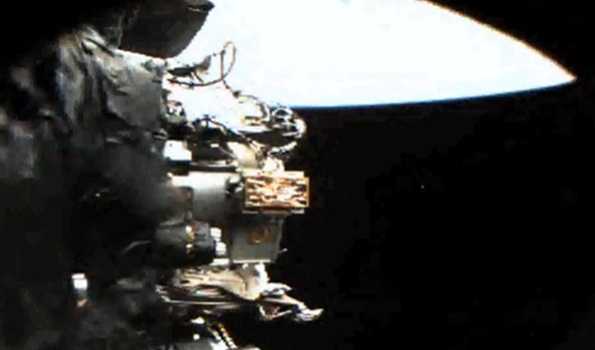ISRO defers SpaDeX docking by 2 days to January 9
- Thuresday, 6 january,2025
- 7 comments
Chennai, Jan 6 (UNI) The Indian Space Research Organisation (ISRO) announced that
the docking of two SpaDeX satellites for space docking experiment, scheduled for
Tuesday afternoon, has been postponed to January 9 as it required further validation
through ground simulations.
In a post on X, the Space Agency said the "SpaDeX Docking scheduled on 7th is now
postponed to 9th."
"The docking process requires further validation through ground simulations based on
an abort scenario identified today,” it said on Monday.
Taking its space journey to the next level and ushering in the New Year 2025 with a bang,
ISRO had on December 30 night became fourth country in the world to launch the Space
Docking Experiment technology, key for Human space flight, by successfully launching
the PSLV-C60/SPADEX Mission from the SHAR Range Sriharikota.
The Spadex Mission carried two payloads--Spadex-A and Spadex-B,
After a flight duration of about 15-16 minutes, the pair of SPADEX satellites, Chaser and
Target, each weighing 220 kg, were precisely injected into an eastward 475 km circular
orbit with an inclination of 55 degrees.
"The two Spadex satellites were launched by PSLV-C60, independently and simultaneously,
into a 475 km circular orbit at 55 deg inclination, with a local time cycle of about 66 days",
ISRO said.
India became the fourth country in the world to launch the Space Docking experiement
Technology after US, Russia and China and the indigenous technology used in this
mission is called the "Bharatiya Docking System" and the SpaDEX (Space Docking
Experiment) mission that marked a milestone showcasing India's expertise in spacecraft
docking technology.
This mission is vital for India’s future space ambitions, as Docking technology is key for
long-term missions like "Chandrayaan-4" and the planned Indian Space Station, besides
crucial for the maiden manned "Gaganyaan" mission.
This launch enhanced ISRO's operational flexibility and expanded its mission horizons.
Apart from the Spadex success, it was also a historic and groundbreaking
mission as ISRO scripted history by deploying a record 24 scientific experiments
into space aboard the PSLV Orbital Experiment Module-4 (POEM-4) involving
the fourth Stage of PSLV, onboard the PSLV-C60 launch vehicle, that
revolutionized space tech.
The two scientific instruments in POEM4 has successfully cultivated crops within four
days in space, besides demonstrating its first walkig robotic arm in space.
"With 24 cutting-edge R&D payloads (14 from ISRO, 10 from academia/startups),
it pushed boundaries in biological experiments, robotics, SAR imaging, AI labs,
and more...A giant leap for science & innovation", ISRO said.
MORE UNI GV 1745

